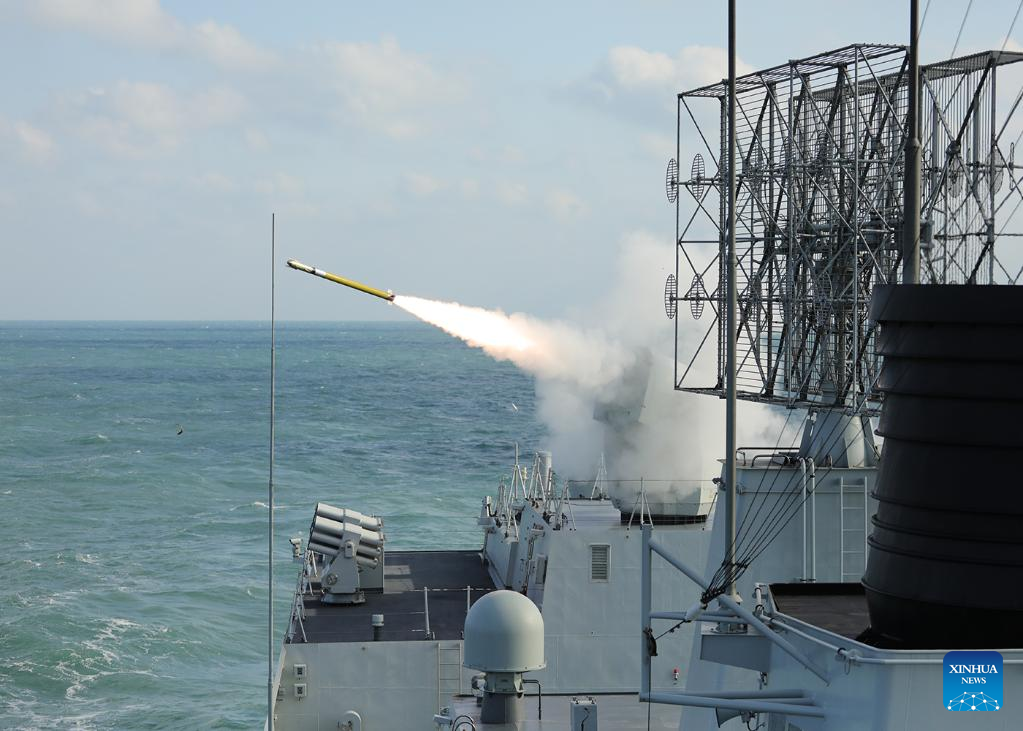There are a multitude of worrisome indicators from across the planet that present a picture of aggressive nations enhancing their military power and working more cooperatively together to threaten global stability and peace. Russia and China are both upgrading their armed forces and training together to present a massive threat to countries across the globe. There can be little doubt that the United States is particularly in their crosshairs.
Even as Moscow’s armed forces remain bogged down in Ukraine, Putin is diligently increasing his ability to threaten the west. He has sent a naval vessel, “Admiral of the Fleet of the Soviet Union Gorshkov,” armed with hypersonic missiles into the Atlantic. It will also deploy into both the Mediterranean and Indian oceans.
The language Russian officials have used is deeply concerning. According to an American Military News report, “During an appearance on Russian TV, parliament member Alexei Zhuravlev said … ‘I will tell you absolutely competently that to destroy the entire the East Coast of the United two Sarmat missiles are needed…The same goes for the West Coast…Four missiles, and there will be nothing left.”
The same journal notes that even as this surface vessel gathers headlines, the Kremlin launched a new nuclear submarine, named the Emperor Alexander III, to sea. It is capable of carrying 16 intercontinental nuclear missiles. It is part of an overall drive to significantly increase Russia’s submarine forces.
China’s dramatic arms buildup, at a rate of increase outpacing even that of the U.S. and the U.S.S.R at the height of the Cold War, cannot be considered just a regional threat. The types of weapons that have been developed and deployed are a clear global threat. A Heritage analysis described a 2021 test of a stunning new planetary strike nuclear missile system, a fractional orbital bombardment system, armed with a hypersonic glide vehicle. “The new Chinese strategic weapon system was reportedly boosted into low-Earth orbit by a civilian space launch vehicle. The launch vehicle, carrying the hypersonic glide vehicle, then made a partial circumnavigation of the globe. At a specified point, the hypersonic glide vehicle, which serves as the weapon’s warhead, was released from the ‘mothership’ before deorbiting and entering the Earth’s atmosphere en route to its terrestrial target.”
Beijing’s intentions to target the United States are becoming increasingly apparent. Radio Free Asia reports that The Liaoning aircraft carrier conducted 320 take-offs and landings in the last 2 weeks of December, in the vicinity of America’s strategic Pacific base Guam.
The danger from the massive military might of the two giant nations is exponentially increased by their growing cooperation in exercises aimed at the United States and its allies. There is a history of combined armed forces training activities, particularly at sea.
According to China’s Defense Ministry spokesperson Senior Colonel Tan “The recent China-Russia Joint Sea-2022 naval exercise fully reflected the level of strategic mutual trust and the depth of tactical coordination between the two sides, and further deepened the China-Russia comprehensive strategic cooperative partnership of coordination for a new era.”
The joint Russian-Chinese threats are not alone. North Korea, wholly dependent on China for its economic survival, has escalated its nuclear threat as well. It’s nuclear program is well passed its early stages and currently constitutes a significant risk to America, Japan, and South Korea. Recognition of that reality has compelled Tokyo to substantially ramp up its defense spending, and has prompted South Korea to demand a greater voice in the nuclear umbrella provided by the United States.
Since the conclusion of the Second World War, the U.S. has benefited from strong defensive alliance headlined by NATO, along with cooperation with several Indo-Pacific nations. The growing axis of Russia, China, North Korea and Iran is a different entity, one that is more offensive in character.
Photo: Chinese naval destroyer Baotou takes part in a joint naval exercise, Joint Sea 2022, in the East China Sea on Dec. 26, 2022. (Photo by Jiang Xia/Xinhua)
